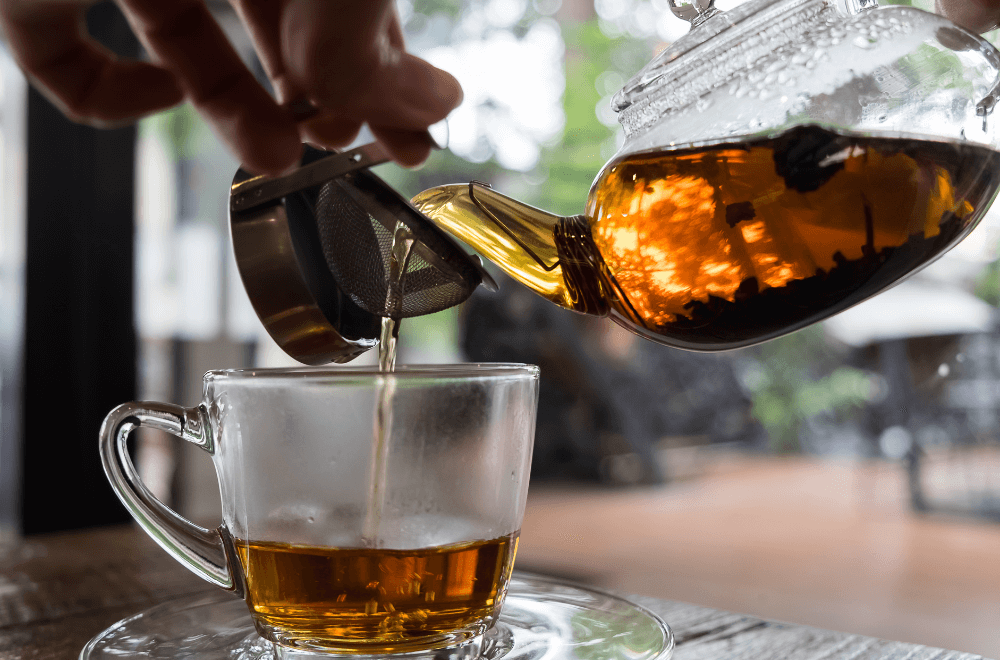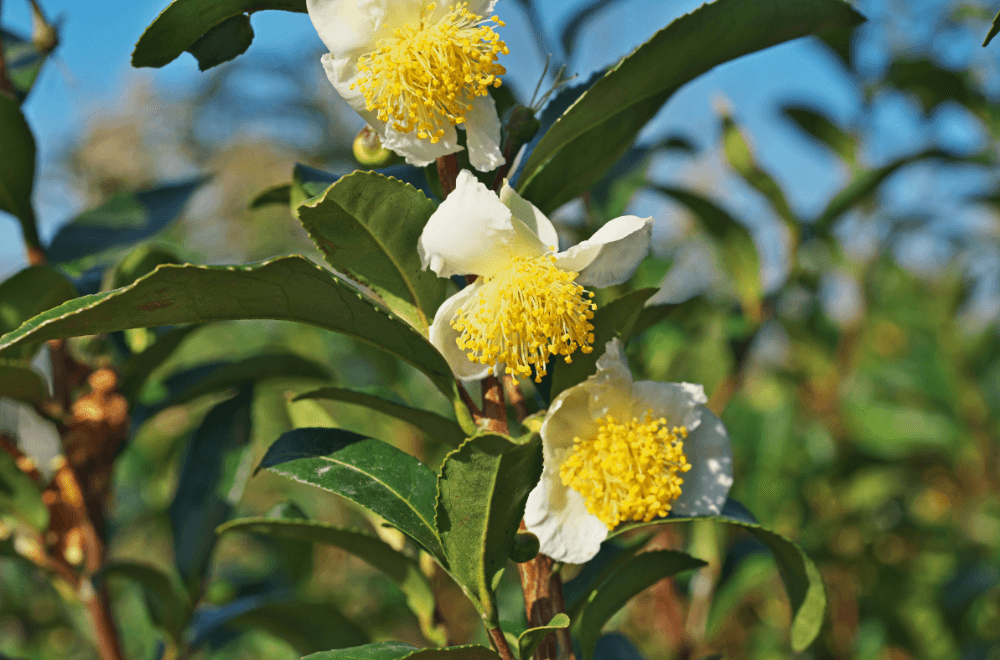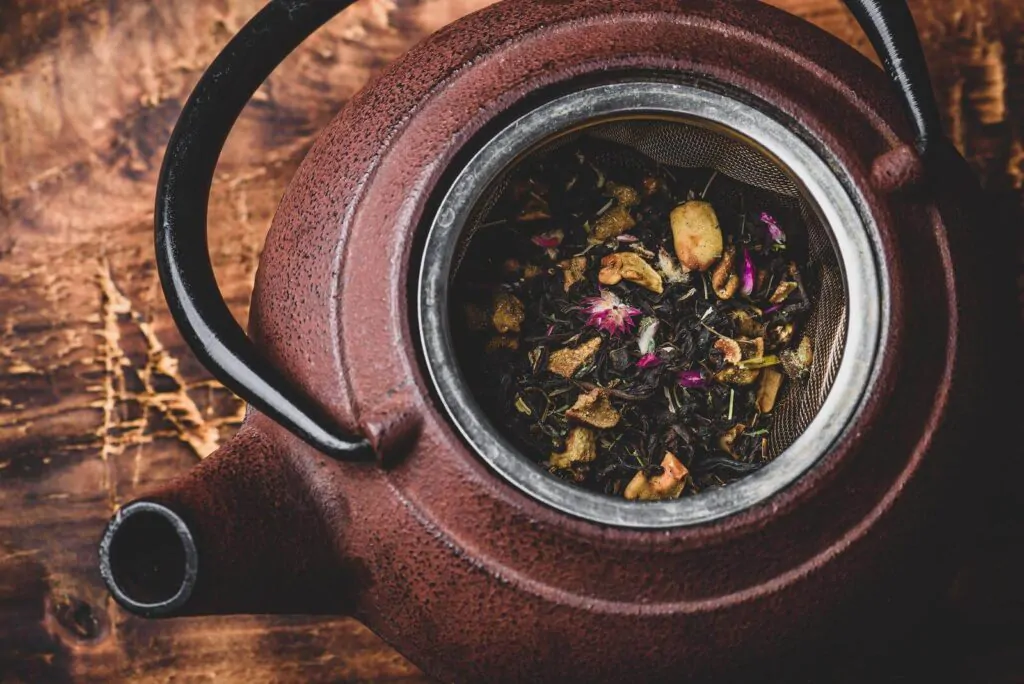To answer the question “why is tea served hot?” we need to take a look at the level of tannins in tea as well as steeping time and brewing temperatures.

If you drink a lot of tea, you might have wondered, “why is tea served hot?” Tea should be served with hot water, somewhere between 185°F to 212°F, to unlock its full potential.
The concentration of tannins in the tea will define its profile; these are compounds that add to the complexity of the tea’s flavor. Even though tannins are barely harmed by heat, they can only be released and permeate throughout the liquid when you steep tea leaves in hot water.
Hot water also comes into play when you add milk to your tea cup. The fat content will stop the brewing process as soon as the milk goes into the tea. Therefore, you want your tea to be fully brewed to extract all the best flavors into the liquid before it blends with the fat.
You might be interested in these alternatives to milk in tea.
What Is The Best Temperature For Brewing Tea?
The water temperature you use to brew your tea should be cohesive with the type of tea you’re drinking. Green tea needs a different temperature to unlock its full potential other than that of black tea and so on.
It also goes the same way for true teas from the camellia Sinensis versus herbal tea or tisanes. The structure of tea leaves, their origins, processing, and quality all contribute to the variation in temperature.
Let’s take white tea, for example. It is known as one of the least processed types of tea. To unlock the best aroma and flavor out of white tea, you want your water to be around 175°F.
Meanwhile, higher-processed teas, such as green tea should be steeped in 180°F water and 212°F water for black tea. Young, raw Pu-erh tea will perform better when the water is near 185°F. However, the optimal temperature for steeping longer-aged Pu-erh tea should be near boiling.
Let’s take a look at herbal tea. For Yerba Mate tea, stick to 185°F or less to make sure you don’t over-brew, or the tea will lose its flavor and diminish its strength. It goes the same way for butterfly pea flower tea, a lesser-known tisane with a soothing tasting profile and a subtle hint of fresh green peas.
Different Teas Should Have Different Steeping Times
The variation in steeping times for different types of tea is filtered down to the level of oxidation and the leaf structure affected by the process. Real tea from the same camellia Sinensis plant is further broken down into multiple categories after they are picked, oxidized, and withered.

Oxidation
The tea leaves start to change color from white (little to no oxidation) to green (more oxidized) and black (most oxidized) after they have been picked. Amongst them, black tea has the hardiest leaf structure, meaning it can interact with higher water temperatures and longer steeping time. On the flip side, the least processed type of tea, such as white tea, ends up with a fragile and tender structure, meaning lower temperatures and shorter steeping time must be considered.
Tannins
Beyond the oxidation limit, the amount of tannins released during different steeping lengths also comes into play. From the get-go, a longer steeping time results in a stronger flavor. This is because the tannins have more time to be released from the leaves and blend into the water.
For that reason, your cuppa will have a bitter taste or boldness. Those who don’t like a strong, pungent tea will try to cover it with milk.
Origins
In some cases, the origins also affect the steeping time. Let’s take black tea, for instance. Indian varieties such as Assams, Darjeelings, and Ceylons black tea need a shorter time to release their full profile of tannins.
Meanwhile, Chinese origins, including Keemun, Yunnan, and Mao Fang black teas, are ready to drink after three or four minutes.
Does Drinking Hot Tea Cool You Down?
Strange as it may seem, drinking hot tea is actually a perfect way to cool you down. Just like any other beverage, hot tea has a physiological effect that causes your heart to beat faster, allowing the blood vessels near your skin to expand, and triggering your body’s sweat response. As a result, the sweat will cool the surface of your skin and gradually reduce the heat.
However, this only rings true in certain cases. Hot tea will not help if you’re sweating buckets, meaning the sweat does not evaporate from the skin’s surface at all. In this case, opt for something cold to cool you down.
You might be interested in our round-up of the best loose-leaf tea brands.
Hot Tea Vs. Cold Tea
We’ve already known that tea should be served hot in order to capture its best-tasting profile. Cold tea, on the other hand, makes it a lot harder for your tastebuds to recognize the subtleties the tea carries when it glides into your tongue.

Hot tea still wins when it comes to antioxidants. This is because a higher temperature allows the tea to be infused properly, extracting more flavors and nutrients into the liquid. Therefore, you can expect a full-bodied and more rounded taste with lots of nutrients and antioxidants in a cup.
I like to steep my tea in a teapot to reduce its chance of being exposed to the air. Air exposure is bad because oxygen will gradually inhibit the number of antioxidants in tea.
You don’t want this to happen because antioxidants are magic workers that reduce the risk of cardiovascular diseases, enhance healthy bones, and boost the immunity system. However, cold tea is delightful thirst-quenching while sunbathing on the beach or when you’ve been sweating after a long day of training at the gym.
Disadvantages Of Drinking Hot Tea
Serving hot tea has become a norm across different cultures. However, drinking hot tea ironically turns out to be a potential danger in some cases.
Those diagnosed with esophageal cancer should not drink hot tea too often, especially if they usually smoke and drink alcohol. When they drink tea that’s hotter than 140°F to 150°F, extreme heat is likely to blanch the cells that line the esophagus. Over time, the tube becomes even more vulnerable and fragile to damage from cancer-causing substances.
Effectively burning your tea also nulls some of the potential health benefits. Therefore, make sure to brew your tea at the right temperature, lower than the 149°F limit, to unlock its full protective potential.
Last but not least, always keep a close eye on the way you carry the teacup. Hot tea is likely to cause significant, scalding burns when you accidentally spill it.

